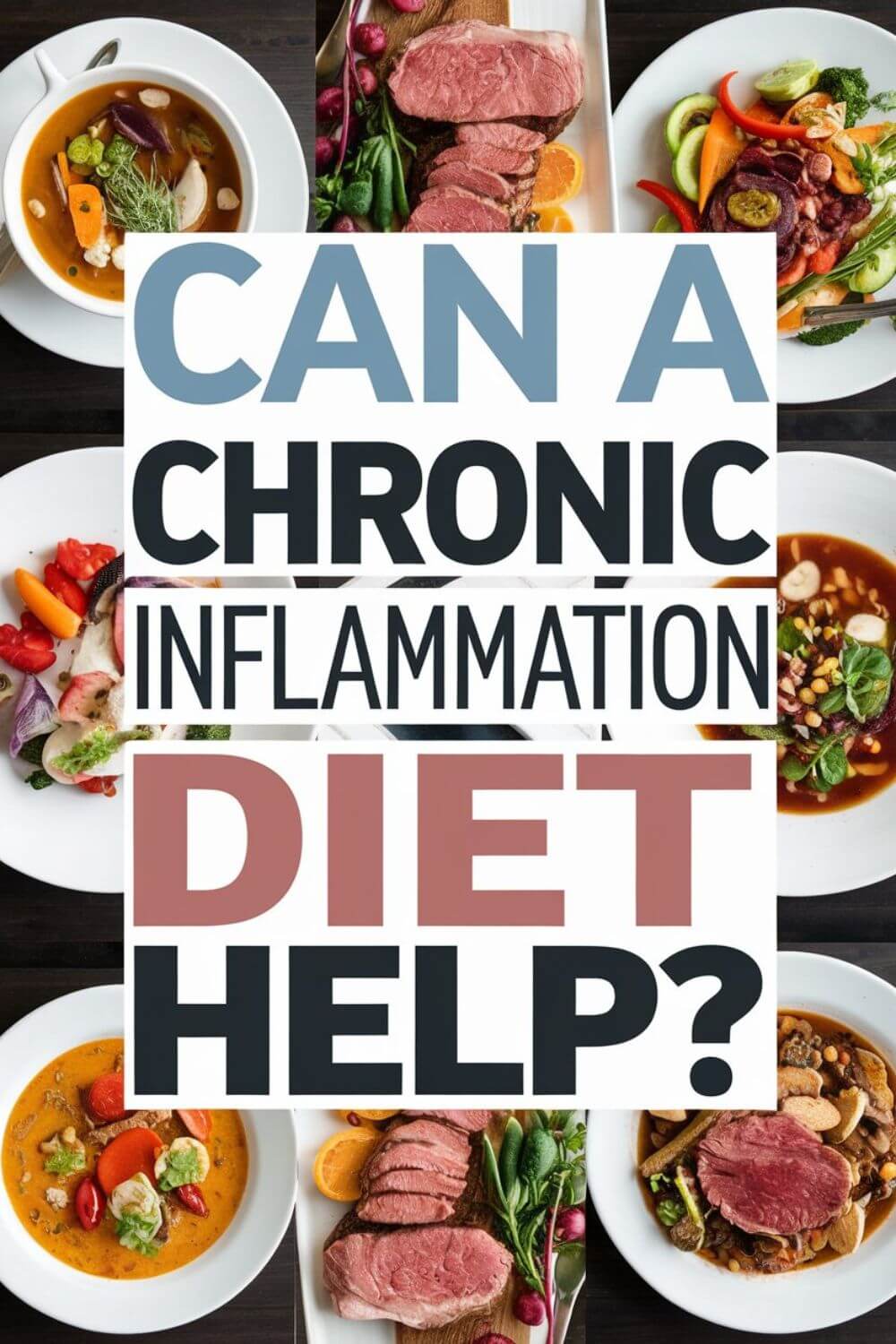Can a Chronic Inflammation Diet Help?
I always wondered what caused my wife to bloat like a balloon, whether it’s endo-belly, IBS, or else. Can a chronic inflammation diet help women like her, women who suffer from two chronic conditions?
Adjusting to a life with chronic illnesses like endometriosis and fibromyalgia is overwhelming, but diet can play a crucial role in managing inflammation and improving quality of life. A chronic inflammation diet focuses on anti-inflammatory foods like vegetables, lean proteins, and omega-3s, while limiting processed foods, sugar, and refined carbohydrates.
For my wife, adopting dietary changes has been a gradual but significant part of her journey. The pain, fatigue, and emotional strain caused by her conditions made even small steps toward an anti-inflammatory diet feel monumental. We’ve learned together that food isn’t just fuel—it’s a way to soothe her body and give her a little more control over her health.
But how can food choices reduce inflammation and help both the body and mind heal?
Discover how dietary changes can support those battling chronic inflammation and how partners can play an essential role in this journey.
- The Role of a Chronic Inflammation Diet in Managing Symptoms
- Low and High FODMAP Foods
- Low FODMAP Recipes for Managing Chronic Inflammation
- Managing Acid Reflux and Heartburn with a Chronic Inflammation Diet
- Emotional and Mental Impact of Managing Chronic Inflammation and Acid Reflux
- Building a Sustainable Chronic Inflammation Diet
- Full List of Anti-Inflammatory Foods
- Final Word on the Chronic Inflammation Diet
The Role of a Chronic Inflammation Diet in Managing Symptoms
When we first explored the idea of a chronic inflammation diet, I didn’t expect it to have such a noticeable impact on my wife’s life. At the time, her body felt like it was working against her—constant pain, overwhelming fatigue, and flare-ups that left her bedridden for days. We were willing to try anything that might offer even a small amount of relief.
It started with eliminating processed foods, which were a staple in our busy lives. I remember the first few weeks were difficult. My wife was exhausted just thinking about changing her eating habits, let alone implementing them. But slowly, we incorporated more fresh vegetables, lean proteins, and foods rich in omega-3s, like salmon and walnuts. Over time, her body responded in subtle ways: fewer flare-ups, slightly better energy levels, and a noticeable improvement in her digestion, which had always been an issue.
The most surprising shift wasn’t just physical—it was emotional. Chronic inflammation doesn’t just affect the body; it impacts mental health as well. When her body felt a little more manageable, her outlook brightened too. It was the first time I’d seen her hopeful about managing her symptoms in a long while.
But this journey wasn’t without its challenges. Social gatherings became difficult—trying to explain her new dietary restrictions often felt awkward, and sometimes people were dismissive. We had to be strategic, planning meals ahead and finding ways to make eating out less stressful. Despite these hurdles, we learned that these changes weren’t just about reducing inflammation; they were about reclaiming a sense of control over her life.
A chronic inflammation diet hasn’t been a cure, but it has been a powerful tool in managing her conditions. It’s given her some relief from the relentless cycle of pain and fatigue and reminded us both that even small steps can lead to meaningful changes.
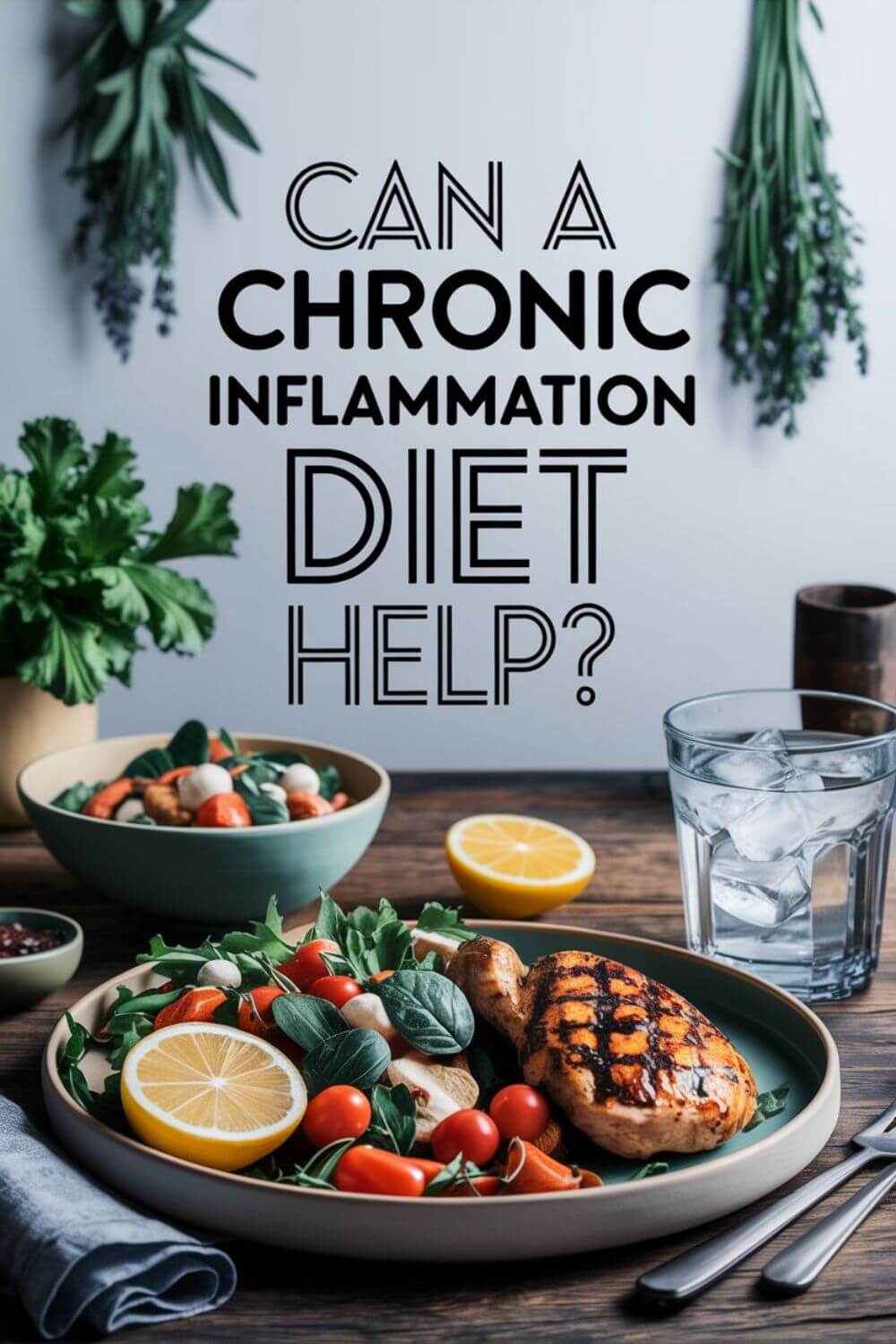
Low and High FODMAP Foods
When it comes to managing chronic inflammation through diet, understanding what works for your body is crucial. For my wife, this meant exploring foods that not only reduce inflammation but also align with her digestive needs. Low FODMAP and high FODMAP diets play a significant role here, as fibromyalgia and endometriosis often cause digestive issues.
Examples of Foods in a Chronic Inflammation Diet
- Leafy Greens (Low FODMAP)
Spinach, kale, and arugula are packed with antioxidants and vitamins that combat inflammation. These are staples in our meals, whether in salads or smoothies. - Fatty Fish (Low FODMAP)
Salmon, mackerel, and sardines are rich in omega-3 fatty acids, which are well-known for their anti-inflammatory properties. They’re great as a main dish or added to salads. - Berries (Low FODMAP)
Blueberries, strawberries, and raspberries are high in antioxidants and low in FODMAPs, making them perfect for snacking or desserts. - Turmeric (Low FODMAP)
This golden spice is a potent anti-inflammatory. Adding turmeric to soups, teas, or even eggs has become a daily habit for us. - Ginger (Low FODMAP)
Known for its anti-inflammatory and digestive benefits, ginger is excellent in teas or as a flavor boost in meals. - Quinoa (Low FODMAP)
A versatile grain that’s easy on digestion and provides a good source of plant-based protein and fiber. - Walnuts and Almonds (High FODMAP in Large Quantities)
These nuts are great for reducing inflammation, but portion control is essential, especially for those sensitive to FODMAPs. - Sweet Potatoes (Low FODMAP)
They’re rich in antioxidants and easier to digest than regular potatoes, making them a great source of energy for my wife. - Avocado (High FODMAP in Large Quantities)
Avocado is packed with healthy fats, but it can be problematic for those on a strict low FODMAP diet. We use it sparingly. - Bone Broth (Low FODMAP)
A soothing and nutrient-rich option that supports joint health and reduces inflammation, especially comforting on bad pain days.
Low FODMAP Diet
A low FODMAP diet focuses on reducing fermentable short-chain carbohydrates that can trigger bloating, gas, and digestive discomfort. For my wife, sticking to a low FODMAP diet during flare-ups has made a huge difference, as it minimizes additional strain on her body caused by digestive distress.
High FODMAP Foods to Avoid
Certain high FODMAP foods, such as garlic, onions, wheat, beans, and large quantities of dairy, can aggravate inflammation and digestive issues. By identifying these triggers, we’ve been able to tailor meals that align with her needs.
Finding Balance
Not all high FODMAP foods need to be avoided entirely. For instance, avocado and nuts can be enjoyed in moderation. This balance allows my wife to focus on a diet that reduces inflammation while still including nutrient-dense foods she enjoys.
Incorporating a chronic inflammation diet tailored to her specific needs has not only eased her symptoms but also given us both a sense of empowerment. By understanding the role of FODMAPs, we’ve found a sustainable approach that supports her health without feeling overly restrictive.
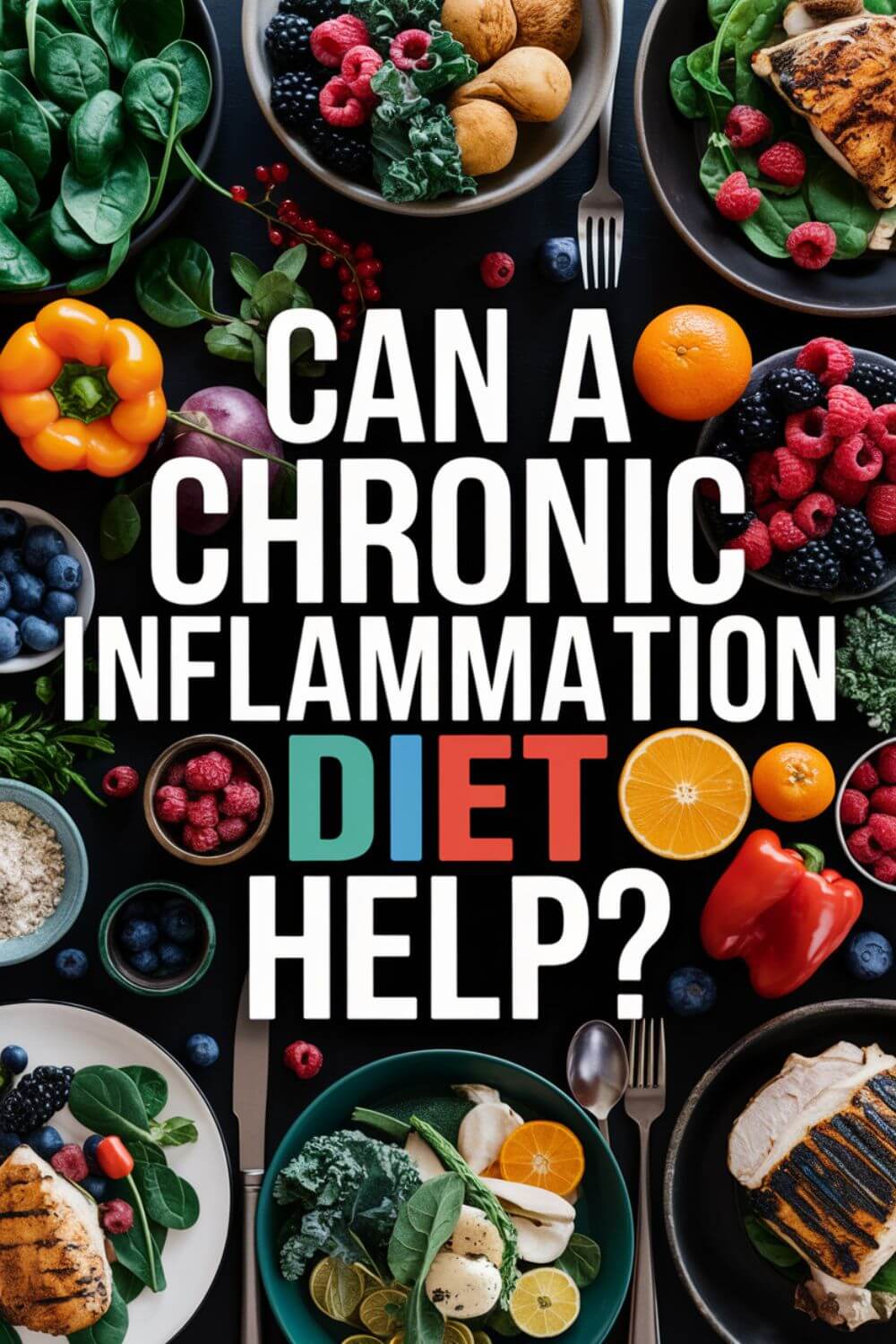
Low FODMAP Recipes for Managing Chronic Inflammation
Here are some easy and delicious low FODMAP recipes that focus on anti-inflammatory ingredients. These dishes are designed to be gentle on the stomach while helping reduce inflammation, making them perfect for those managing chronic conditions like fibromyalgia and endometriosis.
1. Lemon Herb-Grilled Salmon
Ingredients:
- 2 salmon fillets
- 2 tbsp olive oil
- 1 tbsp fresh lemon juice
- 1 tsp dried dill
- 1 tsp dried parsley
- Salt and pepper to taste
Instructions:
- Preheat the grill to medium-high heat.
- Mix olive oil, lemon juice, dill, and parsley in a small bowl.
- Brush the salmon fillets with the mixture and season with salt and pepper.
- Grill for 4-6 minutes per side or until the fish flakes easily with a fork.
- Serve with steamed spinach or a simple salad.
2. Low FODMAP Quinoa and Veggie Bowl
Ingredients:
- 1 cup cooked quinoa
- 1 cup steamed zucchini slices
- 1 cup baby spinach
- 1 medium carrot, shredded
- 2 tbsp olive oil
- 1 tsp turmeric powder
- A squeeze of fresh lemon
Instructions:
- In a large bowl, combine quinoa, zucchini, spinach, and carrot.
- Drizzle with olive oil and sprinkle turmeric powder for an anti-inflammatory kick.
- Squeeze lemon over the bowl, toss, and serve.
3. Sweet Potato and Ginger Soup
Ingredients:
- 2 medium sweet potatoes, peeled and diced
- 4 cups low FODMAP vegetable broth
- 1 tbsp grated fresh ginger
- 1 tbsp olive oil
- 1 tsp turmeric powder
- Salt and pepper to taste
Instructions:
- Heat olive oil in a pot over medium heat, then add grated ginger and sauté until fragrant.
- Add sweet potatoes and vegetable broth, bring to a boil, then reduce heat to simmer for 20 minutes.
- Blend the soup until smooth using an immersion blender or a regular blender.
- Season with turmeric, salt, and pepper before serving.
4. Berry Chia Seed Pudding
Ingredients:
- 2 cups lactose-free almond milk
- 1/4 cup chia seeds
- 1 cup fresh blueberries or strawberries (low FODMAP quantities)
- 1 tsp maple syrup (optional)
Instructions:
- In a jar or bowl, mix almond milk and chia seeds until combined.
- Let the mixture sit in the refrigerator overnight or for at least 4 hours.
- Top with fresh berries and a drizzle of maple syrup before serving.
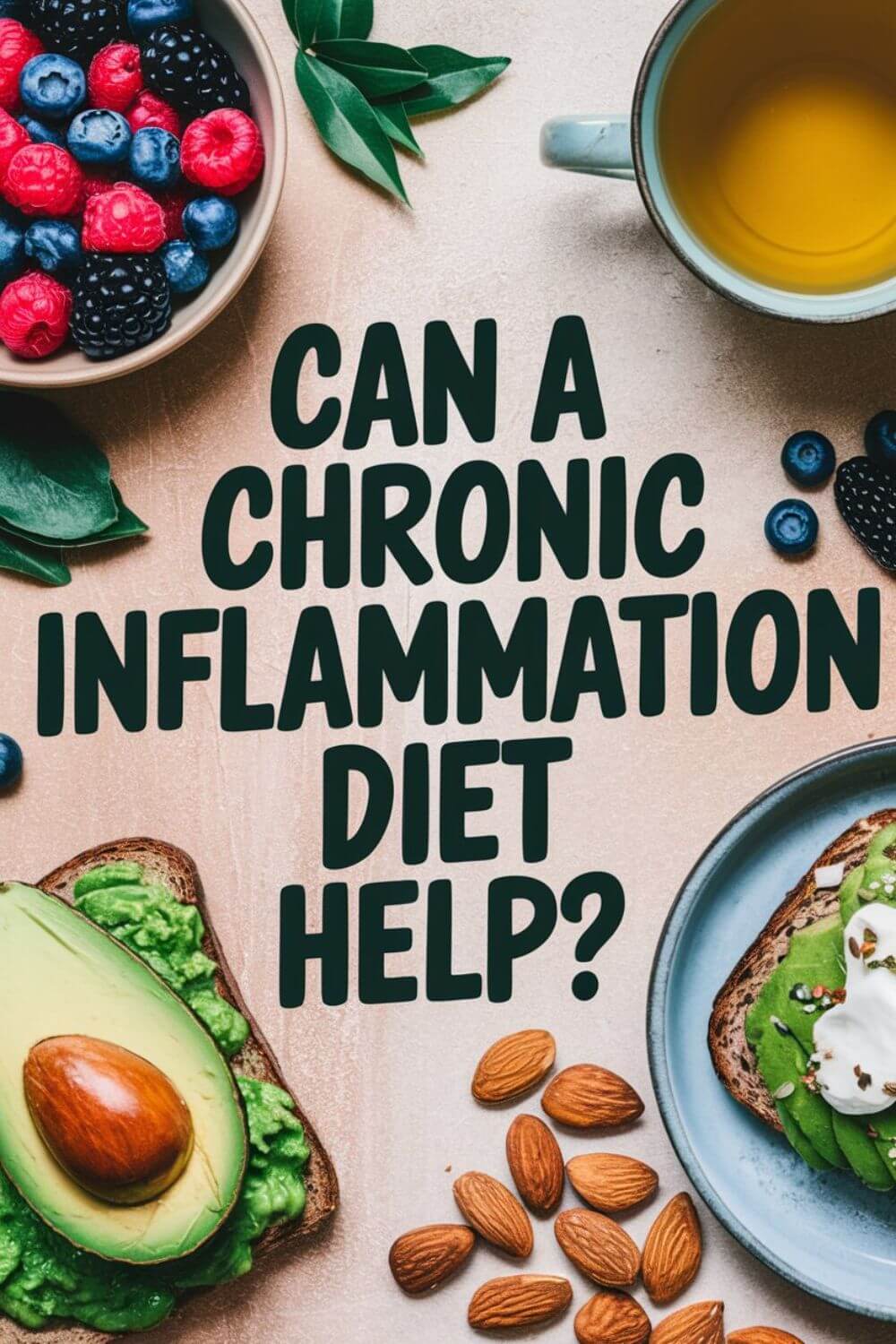
5. Spinach and Walnut Salad with Lemon Dressing
Ingredients:
- 2 cups baby spinach
- 1/4 cup crushed walnuts
- 1/4 cup shredded carrots
- 2 tbsp olive oil
- 1 tbsp fresh lemon juice
- Salt and pepper to taste
Instructions:
- Toss spinach, walnuts, and carrots in a bowl.
- Mix olive oil, lemon juice, salt, and pepper in a small bowl to make the dressing.
- Drizzle the dressing over the salad and serve.
6. Grilled Chicken with Zucchini Noodles
Ingredients:
- 2 chicken breasts
- 2 medium zucchinis, spiralized
- 2 tbsp olive oil
- 1 tsp dried oregano
- 1/2 tsp paprika
- Salt and pepper to taste
Instructions:
- Rub chicken breasts with olive oil, oregano, paprika, salt, and pepper.
- Grill or pan-sear the chicken for 5-6 minutes per side or until cooked through.
- Sauté the zucchini noodles in a skillet with a little olive oil until tender.
- Slice the chicken and serve over the zucchini noodles.
7. Coconut Turmeric Rice
Ingredients:
- 1 cup uncooked jasmine rice
- 1 3/4 cups water
- 1/4 cup coconut milk (canned, low FODMAP portion)
- 1 tsp turmeric powder
- A pinch of salt
Instructions:
- Rinse the rice and add it to a pot with water, coconut milk, turmeric, and salt.
- Bring to a boil, then reduce heat to low and cover.
- Cook for 15 minutes or until the liquid is absorbed.
- Fluff with a fork and serve as a side dish.
8. Ginger Lemon Tea
Ingredients:
- 1 cup hot water
- 1-inch piece of fresh ginger, sliced
- 1 tsp fresh lemon juice
- 1 tsp maple syrup (optional)
Instructions:
- Steep ginger slices in hot water for 5-7 minutes.
- Add lemon juice and maple syrup if desired.
- Enjoy as a soothing anti-inflammatory drink.
These recipes are not only flavorful but also tailored to be gentle on digestion while supporting overall health. Adjust portion sizes to fit your personal tolerance levels and enjoy experimenting with these low FODMAP options.
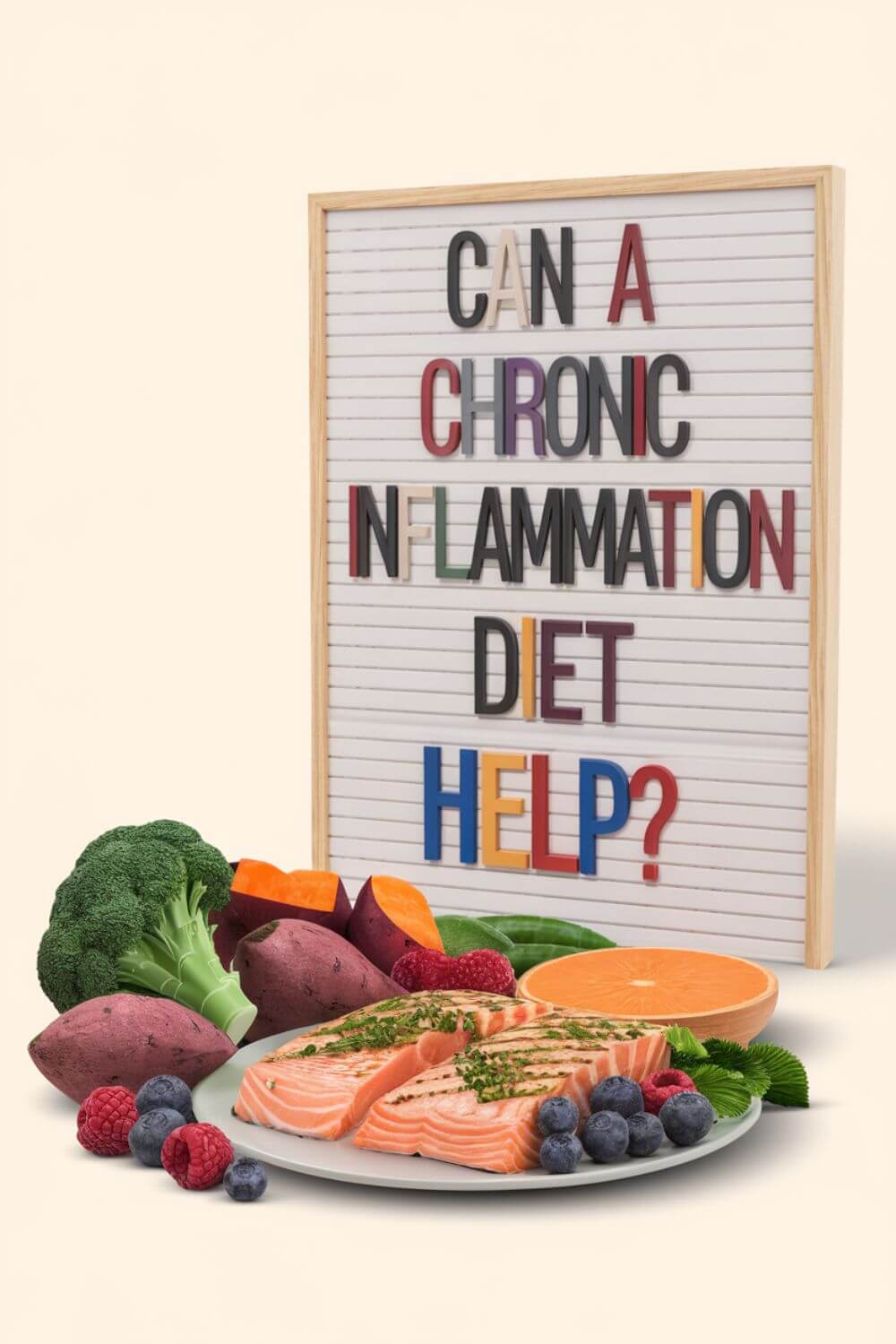
Managing Acid Reflux and Heartburn with a Chronic Inflammation Diet
For those living with chronic conditions like endometriosis and fibromyalgia, acid reflux and heartburn can be frustrating additional symptoms. Chronic inflammation in the body often exacerbates these issues, making it essential to focus on foods that are gentle on the stomach while reducing inflammation. Through my wife’s journey, we’ve discovered ways to manage her acid reflux alongside her chronic inflammation diet.
How Chronic Inflammation and Acid Reflux Are Connected
Chronic inflammation, particularly in the digestive system, can weaken the lower esophageal sphincter (LES), the muscle that prevents stomach acid from rising into the esophagus. For my wife, flare-ups of inflammation often correlate with increased bouts of acid reflux and heartburn, especially after eating certain trigger foods. We had to reevaluate her diet to include anti-inflammatory options that also soothe the digestive tract.
Foods to Include for Acid Reflux Relief
- Oats
A gentle and soothing whole grain that doesn’t aggravate the stomach lining and helps absorb stomach acid. - Ginger
Known for its anti-inflammatory properties, ginger is excellent for calming the stomach and reducing acid reflux symptoms. - Bananas (Ripe)
A low-acid fruit that coats the esophagus and provides a protective layer against stomach acid. - Melons
Honeydew and cantaloupe are alkaline fruits that help neutralize acid in the stomach. - Lean Proteins
Skinless chicken, turkey, and fish are less likely to trigger acid reflux compared to fatty cuts of meat. - Leafy Greens
Spinach, kale, and arugula are low in acid and high in anti-inflammatory compounds. - Whole Grains
Brown rice, quinoa, and whole-grain bread provide fiber and keep the stomach settled. - Low-Fat Yogurt
Provides probiotics to support gut health while soothing the esophagus, but it’s essential to avoid high-fat versions.
Foods to Avoid for Acid Reflux
- Citrus Fruits
Oranges, lemons, and grapefruits are acidic and can irritate the esophagus. - Tomatoes
High in acid and a common trigger for heartburn. - Spicy Foods
Ingredients like chili powder and black pepper can aggravate acid reflux. - Fried or Fatty Foods
These delay stomach emptying, increasing the risk of acid reflux. - Chocolate
Contains caffeine and theobromine, both of which can relax the LES and trigger reflux. - Caffeine and Carbonated Drinks
These can increase stomach acid production and weaken the LES.
Dietary Adjustments for Dual Management
Managing both chronic inflammation and acid reflux requires balancing anti-inflammatory foods with those that are easy on the digestive system. Here’s how we adapted my wife’s diet:
- Smaller, Frequent Meals
Large meals can increase pressure on the LES and worsen reflux. We switched to smaller, more frequent meals to reduce this risk. - Avoid Eating Close to Bedtime
Eating late at night often triggered her acid reflux. We now aim to have the last meal at least 3 hours before lying down. - Incorporating Alkaline Foods
Foods like melons, cucumbers, and leafy greens not only combat inflammation but also balance stomach acid levels. - Hydration
Drinking water throughout the day helps wash down acid and keeps the digestive system functioning optimally. However, she avoids large amounts during meals to prevent overfilling the stomach.
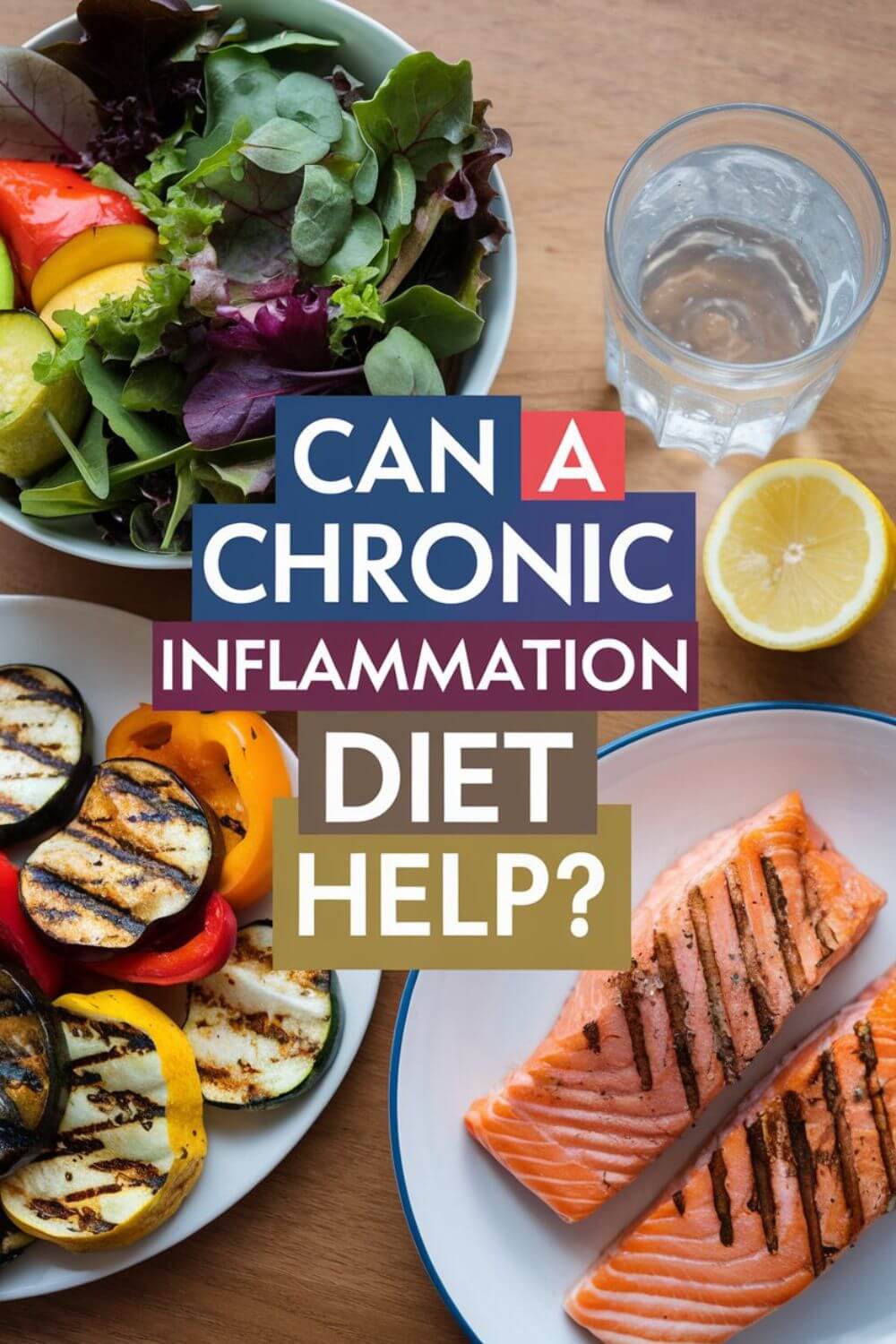
Sample Meal Plan for Chronic Inflammation and Acid Reflux
Breakfast:
- Oatmeal topped with sliced bananas and a drizzle of honey.
- A cup of ginger tea.
Lunch:
- Grilled chicken breast with quinoa and steamed zucchini.
- A small side of cantaloupe slices.
Snack:
- Handful of walnuts (small portion to avoid overloading FODMAPs).
- Low-fat yogurt with a sprinkle of chia seeds.
Dinner:
- Baked salmon with a side of roasted sweet potatoes and sautéed spinach.
- A glass of water with a slice of cucumber for alkalinity.
Before Bed:
- A small cup of warm chamomile tea to calm the stomach and prepare for restful sleep.
Lifestyle Changes to Complement the Diet
- Elevate the Head While Sleeping: Using a wedge pillow or elevating the bed can reduce reflux during the night.
- Chew Food Slowly: Digestion begins in the mouth, so eating slowly can reduce the risk of triggering acid reflux.
- Maintain a Healthy Weight: Excess weight can increase pressure on the LES, so managing weight through a balanced diet is crucial.
By focusing on foods that align with both a chronic inflammation diet and acid reflux management, my wife has found greater comfort and fewer flare-ups. These adjustments have not only improved her physical health but also given her a sense of control over her symptoms, one small but vital step toward reclaiming her well-being.
Emotional and Mental Impact of Managing Chronic Inflammation and Acid Reflux
Living with chronic inflammation and dealing with acid reflux is not just a physical battle—it takes a toll on emotional well-being too. For my wife, the combination of relentless pain, dietary restrictions, and constant adjustments has often left her feeling frustrated and overwhelmed. Managing these conditions has become a part of her daily life, but the emotional weight it carries is something that isn’t always visible to others.
There were days when she would break down, not because of the pain itself, but because she felt like her body was betraying her. The restrictions on what she could eat made her feel isolated, especially during social events. Watching her struggle to navigate a world that didn’t accommodate her needs was heartbreaking. She would often say, “I just want to feel normal again,” and those words stuck with me.
As her partner, I’ve learned to recognize the signs of when the emotional toll is too much for her. Acid reflux flare-ups and inflammation aren’t just uncomfortable—they’re reminders of the larger battles she faces with her health. There are moments when she feels discouraged, questioning if the effort to manage these conditions is worth it. During these times, I’ve found that empathy and reassurance go a long way.
It’s important to acknowledge that mental health is deeply intertwined with chronic illness. For my wife, taking control of her diet gave her a sense of empowerment, even if the progress was slow and uneven. By celebrating small victories, like finding a meal that doesn’t trigger reflux or a day with fewer symptoms, we’ve been able to shift the focus from what’s been lost to what can still be gained.
Managing chronic inflammation and acid reflux is more than a physical journey—it’s about resilience, patience, and the unwavering support of a partner who truly understands. Together, we’ve learned to find strength in the small wins, knowing that every step forward, no matter how small, is a step toward a better quality of life.
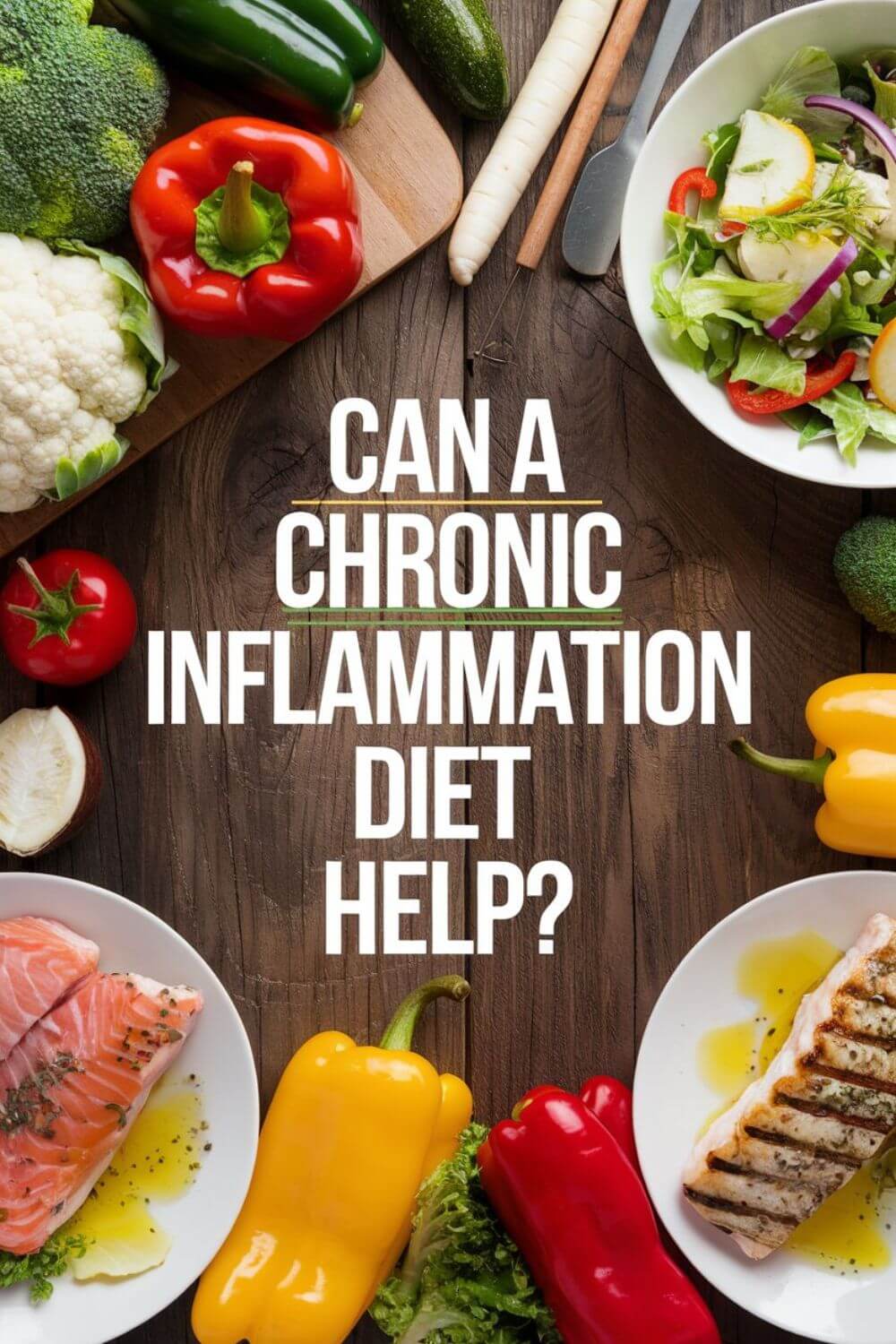
The Emotional Strain of Acid Reflux and Heartburn
Acid reflux and heartburn may seem like minor issues to those who don’t experience them regularly, but for my wife, they’re a constant reminder of how her body works against her. The burning sensation, the discomfort after meals, and the fear of triggering symptoms can take a toll not just on her physical health but on her mental well-being too.
Social Isolation Due to Dietary Restrictions
One of the hardest parts of managing acid reflux is the impact on social life. My wife often feels anxious about eating out or attending gatherings because of the potential triggers in meals she hasn’t prepared herself. The fear of experiencing a flare-up in public leads to isolation, making her feel left out of simple joys like sharing a meal with friends.
Sleepless Nights and Their Mental Toll
Acid reflux often strikes at night, disrupting sleep and leaving her exhausted. The lack of rest compounds her already overwhelming fatigue from chronic inflammation, creating a vicious cycle of physical discomfort and emotional strain. For her, a bad night isn’t just about being tired—it’s about feeling defeated before the next day even begins.
Guilt Around Meal Preparations
With acid reflux and chronic inflammation, meal planning is a constant challenge. My wife often feels guilty about the extra effort required to prepare foods that suit her needs. She worries about being a burden, even though I’ve reassured her that supporting her is not a chore but an act of love.
The Power of Reassurance and Adaptability
As her partner, I’ve learned that reassurance and flexibility are key. When her acid reflux symptoms flare up, it’s not just about offering practical solutions like adjusting her position or preparing soothing foods—it’s about reminding her that her struggles are valid and that she’s not alone.
Small Changes, Big Impact
We’ve discovered that even small adjustments can make a big difference. Elevating the bed, having ginger tea after meals, and preparing low-acid meals have become part of our routine. While these changes may seem minor to others, they’ve given her a sense of control over her condition, which has been empowering for her mental health.
Managing acid reflux and heartburn alongside chronic inflammation is more than a physical challenge—it’s an emotional one too. Together, we’ve learned to navigate the ups and downs, finding strength in each other and in the knowledge that even small victories are worth celebrating.
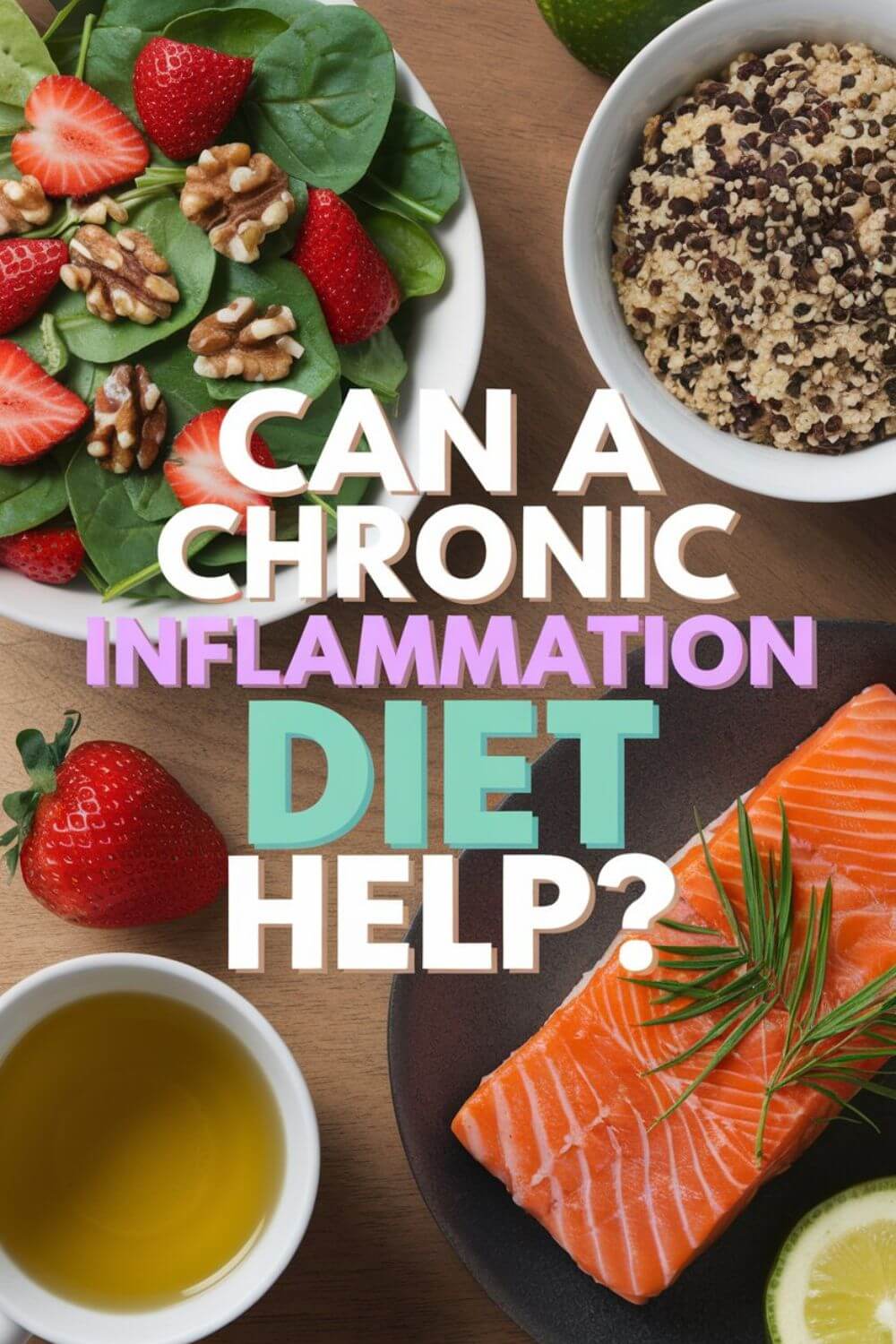
Building a Sustainable Chronic Inflammation Diet
Creating a diet to manage chronic inflammation has been a journey of trial and error for my wife and me. At first, it felt overwhelming—so many foods to avoid, so many new ingredients to try. But over time, we’ve found a rhythm that works, and the changes have brought noticeable improvements not just in her symptoms but in her overall outlook on life.
One of the first steps was learning which foods are naturally anti-inflammatory. Leafy greens, berries, nuts, and fatty fish became staples in our meals. At first, these seemed like small, subtle changes, but the impact on her energy levels and digestion was undeniable. We started to focus on what she could eat, rather than what she couldn’t, which shifted our mindset from restriction to opportunity.
Meal prep became a bonding activity for us. Together, we explored recipes, experimented with spices like turmeric and ginger, and discovered new ways to make healthy food delicious. Incorporating these ingredients felt empowering for her—it was a way to take back control from her conditions.
Another important aspect was keeping the diet realistic and sustainable. We avoided drastic overhauls that could add stress and focused on gradual changes. For example, we began by swapping out processed snacks for nuts or fresh fruit and moved toward more elaborate adjustments, like replacing traditional pasta with zucchini noodles or quinoa.
Flexibility has been key. There are days when sticking to a perfect plan isn’t possible, and that’s okay. We’ve learned to adapt without guilt, focusing on consistency over perfection. It’s about creating a lifestyle, not a temporary fix.
Through this journey, I’ve seen how diet is more than just nourishment—it’s a tool for healing and hope. Watching my wife feel a little better each day, knowing that these changes are helping her regain a sense of control, has made every effort worthwhile. Together, we’ve proven that even in the face of chronic inflammation, there are steps we can take to make life more manageable and fulfilling.
Full List of Anti-Inflammatory Foods
Here’s a comprehensive list of anti-inflammatory foods that can help manage chronic inflammation, support overall health, and reduce symptoms associated with conditions like endometriosis and fibromyalgia.
Fruits
- Berries: Blueberries, strawberries, raspberries, and blackberries (rich in antioxidants).
- Citrus: Oranges, lemons, limes (moderate quantities to avoid acidity issues).
- Tropical Fruits: Pineapple, papaya (contain bromelain and papain, natural anti-inflammatory enzymes).
- Apples: High in fiber and quercetin, a natural anti-inflammatory compound.
- Cherries: Particularly tart cherries, known for reducing inflammation and muscle soreness.
- Avocado: Packed with healthy fats and antioxidants, but moderate portions are recommended.
Vegetables
- Leafy Greens: Spinach, kale, arugula, Swiss chard (high in antioxidants and vitamins).
- Cruciferous Vegetables: Broccoli, cauliflower, Brussels sprouts (contain sulforaphane, an anti-inflammatory compound).
- Sweet Potatoes: A rich source of beta-carotene and fiber.
- Zucchini: Easy to digest and packed with nutrients.
- Bell Peppers: Especially red, which are high in vitamin C and antioxidants.
- Carrots: Rich in beta-carotene and great for reducing inflammation.
- Cucumbers: Hydrating and cooling, with mild anti-inflammatory properties.
Proteins
- Fatty Fish: Salmon, mackerel, sardines, and trout (rich in omega-3 fatty acids).
- Lean Poultry: Skinless chicken and turkey (low-fat options).
- Plant-Based Proteins: Lentils, chickpeas, and quinoa (rich in fiber and nutrients).
- Eggs: Particularly omega-3 enriched eggs.
Nuts and Seeds
- Almonds: Packed with healthy fats and vitamin E.
- Walnuts: Rich in omega-3 fatty acids.
- Chia Seeds: High in omega-3s and fiber.
- Flaxseeds: Excellent source of omega-3s and lignans, a plant-based anti-inflammatory compound.
- Pumpkin Seeds: High in magnesium and antioxidants.
Whole Grains
- Quinoa: A complete protein and gluten-free option.
- Brown Rice: High in fiber and gentle on digestion.
- Oats: Packed with fiber and a great source of energy.
- Barley: Rich in beta-glucans, which have anti-inflammatory effects.
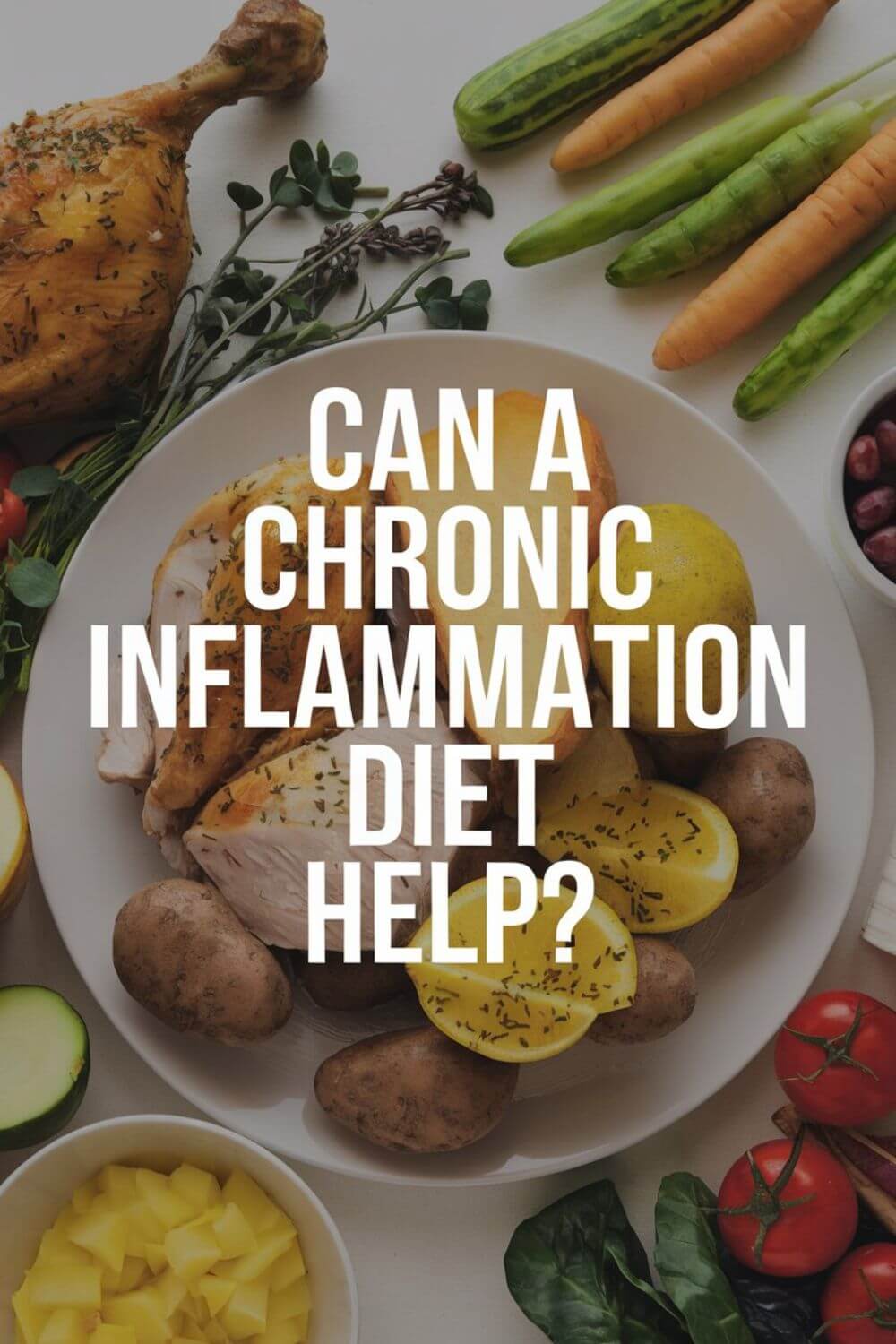
Herbs and Spices
- Turmeric: Contains curcumin, a powerful anti-inflammatory compound.
- Ginger: Known for its ability to reduce pain and inflammation.
- Garlic: Packed with sulfur compounds that fight inflammation.
- Cinnamon: High in antioxidants and anti-inflammatory properties.
- Rosemary: Contains anti-inflammatory and antioxidant compounds.
- Basil: Especially holy basil, known for its anti-inflammatory effects.
Healthy Fats
- Olive Oil: Extra virgin olive oil is a staple in anti-inflammatory diets.
- Avocado Oil: Great for cooking and high in monounsaturated fats.
- Coconut Oil: Contains medium-chain triglycerides with anti-inflammatory benefits.
Legumes
- Lentils: High in fiber and plant-based protein.
- Chickpeas: Packed with fiber and nutrients.
- Black Beans: Contain antioxidants and are low in fat.
Dairy Alternatives
- Lactose-Free Yogurt: Provides probiotics without triggering inflammation.
- Almond Milk: Low in fat and free from lactose.
- Coconut Milk: In moderation, a creamy, anti-inflammatory option.
Beverages
- Green Tea: Packed with antioxidants and polyphenols.
- Chamomile Tea: Calms the stomach and reduces inflammation.
- Ginger Tea: Soothes pain and inflammation.
- Turmeric Milk (Golden Milk): A warm, anti-inflammatory drink with turmeric and almond milk.
Miscellaneous
- Dark Chocolate: At least 70% cocoa, rich in antioxidants.
- Honey: Especially raw or manuka honey, with anti-inflammatory properties.
- Bone Broth: Rich in collagen and nutrients that support joint health.
This list provides a variety of options to incorporate into a chronic inflammation diet, offering diverse flavors and nutrients while focusing on reducing inflammation naturally. Adjust portions based on individual tolerance and dietary needs.
Final Word on the Chronic Inflammation Diet
A chronic inflammation diet is not just about food—it’s about reclaiming control, finding balance, and giving your body the support it needs to heal. For my wife, adjusting her diet wasn’t just a physical necessity; it was an emotional journey that gave her a renewed sense of hope. Chronic conditions like endometriosis and fibromyalgia take so much from those who live with them, but food became a way for us to fight back, one meal at a time.
Through trial and error, we’ve learned that an anti-inflammatory diet is not a one-size-fits-all solution. It’s about understanding her body, identifying triggers, and celebrating the small victories that come with each positive change. By focusing on nutrient-rich, anti-inflammatory foods—like leafy greens, fatty fish, and turmeric—we’ve seen improvements not only in her symptoms but in her overall well-being.
But it’s not just about what you eat; it’s about how you approach it. We’ve made this diet sustainable by prioritizing flexibility and joy in the process. There are days when the plan isn’t perfect, and that’s okay. The goal is to create a lifestyle that supports her health without adding unnecessary stress or guilt.
As her partner, I’ve come to see how deeply food impacts every part of her life—not just her physical health, but her mental and emotional state as well. Preparing meals together has become a way for us to connect, to share hope, and to take back a little of the power that these chronic conditions try to steal. It’s a reminder that even in the face of overwhelming challenges, small, consistent changes can lead to meaningful progress.
For anyone navigating chronic inflammation, know this: you are not alone. Whether you’re managing your own health or supporting someone you love, the journey is about finding what works for you. Food is not a cure, but it can be a powerful tool for healing, resilience, and hope.
Small steps lead to big changes. What adjustments have you made in your diet to support your health or that of a loved one? Share your experiences, tips, or questions in the comments below, and let’s continue building a community of support and understanding. Together, we can navigate the path to better health.


About Me
Hi, I’m Lucjan! The reason why I decided to create this blog was my beautiful wife, who experienced a lot of pain in life, but also the lack of information about endometriosis and fibromyalgia for men…
